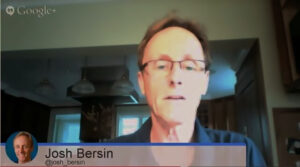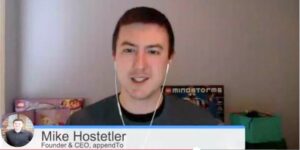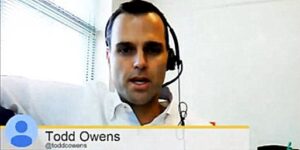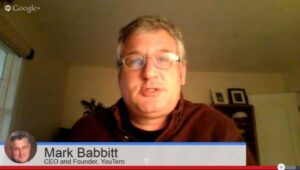
5 Ways to Improve Employee Experience With HR Tech
Sponsored by: Neocase Did you know more than 160 million people are employed in the U.S.? Unfortunately, however, rising turnover is eroding workforce retention. In

Sponsored by: Neocase Did you know more than 160 million people are employed in the U.S.? Unfortunately, however, rising turnover is eroding workforce retention. In

Sponsored by Reejig Countless HR tools, applications, and platforms now rely on artificial intelligence in some form. Users may not even notice that AI is

EDITOR’S NOTE: This is the last article in a 4-part series sponsored by Unit4. The series outlines a new approach to talent strategy for people-centric

What do we love about the TalentCulture community? It’s a community of participants who understand the power of information and feedback. With that in mind,

“The war for talent is over, and the talent won.” What’s behind this revolution? Let’s discuss this week at #TChat events with talent management analyst, Josh Bersin

Remote work isn’t a new concept — but its popularity is skyrocketing. What can employers do to ensure that virtual teams are truly successful?

Is your company overdue for a culture makeover? How can leaders diagnose their organization’s health and drive successful change?

Are technology and innovation like love and marriage? If you care about the future of work, look closer at this special relationship

Once in awhile we come face-to-face with reminders that HR really has come a long way, baby

Mobile recruiting is on the rise. What about mobile hiring? The TalentCulture community talks with HR technology experts

The world of work is growing more complex and interesting all the time. Who are tomorrow’s leaders and how can they prepare today? Our community speaks…

Is Gen X really the “forgotten generation”? If so, what does that mean as the next wave of leaders must step in to lead the world of work?

How are employers pushing the “gamification” envelope to improve hiring and management decisions? See highlights and collected resources from a week of playful #TChat events

Is your professional persona an accurate reflection of you? How can you reinvigorate your personal brand for better results? Let’s talk about it…

Do you see a talent tsunami ahead? What is your organization doing to protect your investment in employee morale and performance?

“Big data” is all the rage. But what does it really mean, and how can HR professionals apply if effectively for better business decisions? #TChat takes on the big questions about data…

HR technology is advancing at breakneck pace! Is that all good — or are we at risk of losing something vital in acquiring and developing talent? See wisdom from the TalentCulture crowd…

It’s no secret. Both the “art” and “science” of talent management are experiencing a fundamental transformation. Disruption is everywhere. The future is uncertain. So why should we be celebrating?

What role does age really play in today’s workplace? One of our very own #TChat Ambassadors takes a tough look, and offers advice for young professionals…
Live from the Society of Human Resource Management Leadership conference in our nation’s capitol – the weekly #TChat Twitter forum tackled issues at the intersection of business leadership, HR and public policy…
Are assessments the key to hiring the best talent and retaining your best people? Good question. It’s not easy to answer, but the TalentCulture community is uniquely qualified to examine the pros and cons…
I spent most of this past week at the HRO Today conference in Las Vegas as a member of the blog squad, and what do I
“Gadgets be gone.” Ah, no truer words have ever been spoken. That was one of my lighter “tweetable” sentiments from yesterday’s HRO Today Forum analyst
We’ve talked before about how hot the theme of ‘innovation’ is. In the technology world, much of what’s filed under ‘innovation’ is related to cloud
What do HR practitioners really do? We may not be sure, but we know that HR professionals have a direct effect on the lives of everyone in the workforce, every day – in a multitude of ways. That’s what we’re talkin about at HREvolution – and at #TChat…